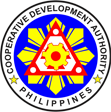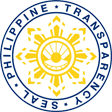- Kim’s Dream
- Orlando R. Ravanera
“So rich yet so poor,” that’s how social scientists described Mindanao in their Studies and the root cause of this paradox is what is called the Enclosure of the Commons. For us to understand such, let us reflect on how rich Mindanao is.
That Mindanao is oozing with ecological resources is of no question. Based on the Study of the United Nations’ Food and Agricultural Organization (UN-FAO), per unit area, Mindanao is the richest on earth in terms of biodiversity. The 5000-hectare Mt. Kintanglad in Bukidnon is the home of flora and fauna whose number of biodiversity is far greater in number compared to those found in the one billion-hectare continent of North America. The richness is not just found above the ground. Beneath are some 72 kinds of minerals.
The ecological wealth does not stop at the shorelines as the Philippine Archipelago has been described as the “Center of the center of marine life on earth,” with bays looming with rich marine life. But Studies have shown that out of the 13 major bays in the country, 10 are already biologically dead. In fact many of these dead bays are in Mindanao.
Amidst the abundance loomed so much poverty. Based on the Study of the United Nations’ Development Program, the poor in Mindanao are the poorest through-out the nation. Of the 25 poorest provinces, 14 are in Mindanao and are suffering from high poverty gap ratios.
Poverty did loom because of the Enclosure of the Commons which has been described as the transformation of the land including all the natural resources from public to private ownership.
Included in the Commons are our forest. But where all our forest gone? Gone to loggers everyone as the 17 million of hectares of dipterocarp forest with all the biodiversity are now erased from the face of the earth. The forests as one of our Commons are the watersheds that provide us water, our means to life. With our forest and watersheds gone, of the 25 major rivers in the country, 15 have either dried-up or polluted. Where are all our minerals gone? Gone to miners everyone.
It is in Mindanao that you see thousands of hectares of pine-apple, banana, palm-oil and what have you that are feeding the consumerist lifestyle of the people in the North while hunger is evident in the South. Hunger is glaring in Mindanao, an island that has been called as the “food basket” of the country. What a paradox?! In fact, according to the Food and Nutrition Institute, some 28% of the Filipino children are malnourished, 27% are stunted and 30% underweight.
As Commons, the land must be used to respond to the basic needs of the people and must not be privatized to make so much rakings. Let us learn from our Indigenous People. They were once the masters in that land that no one owned because private ownership is not in their language as such is founded on the strong belief that no one can own the land which outlast him. You cannot own the land, the land will own you. Their ancestors passed on to them the use of the land in the spirit of Res Communis (no one owns but every one uses). And rightfully so because just like water and air, land is a means to life.
This violent economy of dispossession through massive exploitation of our resources, be forest, water, minerals or land, has not only imprisoned the people especially the Indigenous People from the quagmire of poverty but has put Mindanao in total disarray due to ecological turbulence.
This Enclosure of the Commons is now glaringly happening in the life of our Indigenous People in Talakag, Bukidnon. A group of Chieftains headed by Datu Linggi Inhagedan Modesto Pucol, the Chairman and representative of the Unified Higaonon-Manobo-Talaandig Kitanglad-Kalatungan Ancestral Domain Council met me recently and reported how their water rights have been violated. Worse, the TULUGAN of the IPs had been wantonly destroyed. This was followed by another report from the Chairman of the IPs Cooperative, Sultan Abdul Amoran with some 2,000 IP members coming from the six barangays stating that their Ancestral Domain has been declared and the subject of a Community Forest Management Agreement (CBFMA) without even consulting or even informing them.
Ang tanong po nila, “Kami ay tinuturing na parang hindi tao. Tao ba kami?”
That’s the painful reality. In the Enclosure of the Commons, there is this creation of the “disposable” people by denying rights of access to the commons that sustained them.
You want to liberate our people from the quagmire of poverty? Please respect the Commons. Dismantle the system of Enclosure of the Commons in Mindanao.
World-renowned environmental activist and physicist and a friend, Dr. Vandana Shiva has described Enclosure of the Commons as “the enclosure of the minds and imagination with the result that enclosures are defined and perceived as universal human progress, not as growth of privilege and exclusive rights for a few and the dispossession and impoverishment for the many.”
As a countervailing force against the Enclosure of the Commons, the cooperatives are the liberating force because the DNA of cooperativism is MEMBERS-OWNED (no one shall be left behind; VALUE-BASED & PRINCIPLE-DRIVEN (not having more but BEING more in a world buried in so much consumerism and materialism) and SUSTAINABLE (inclusive growth for people, planet, prosperity and peace).






